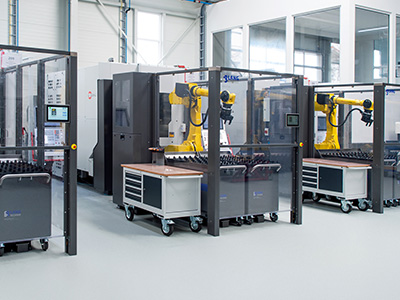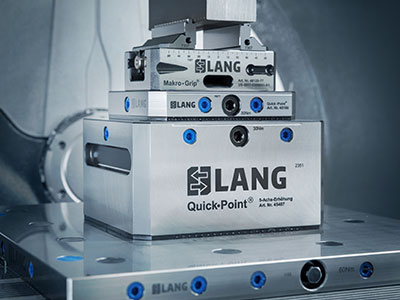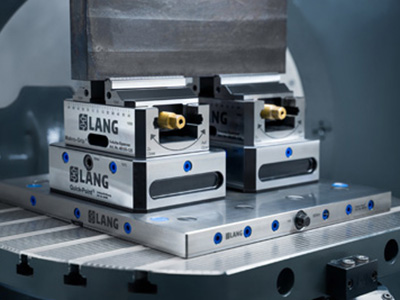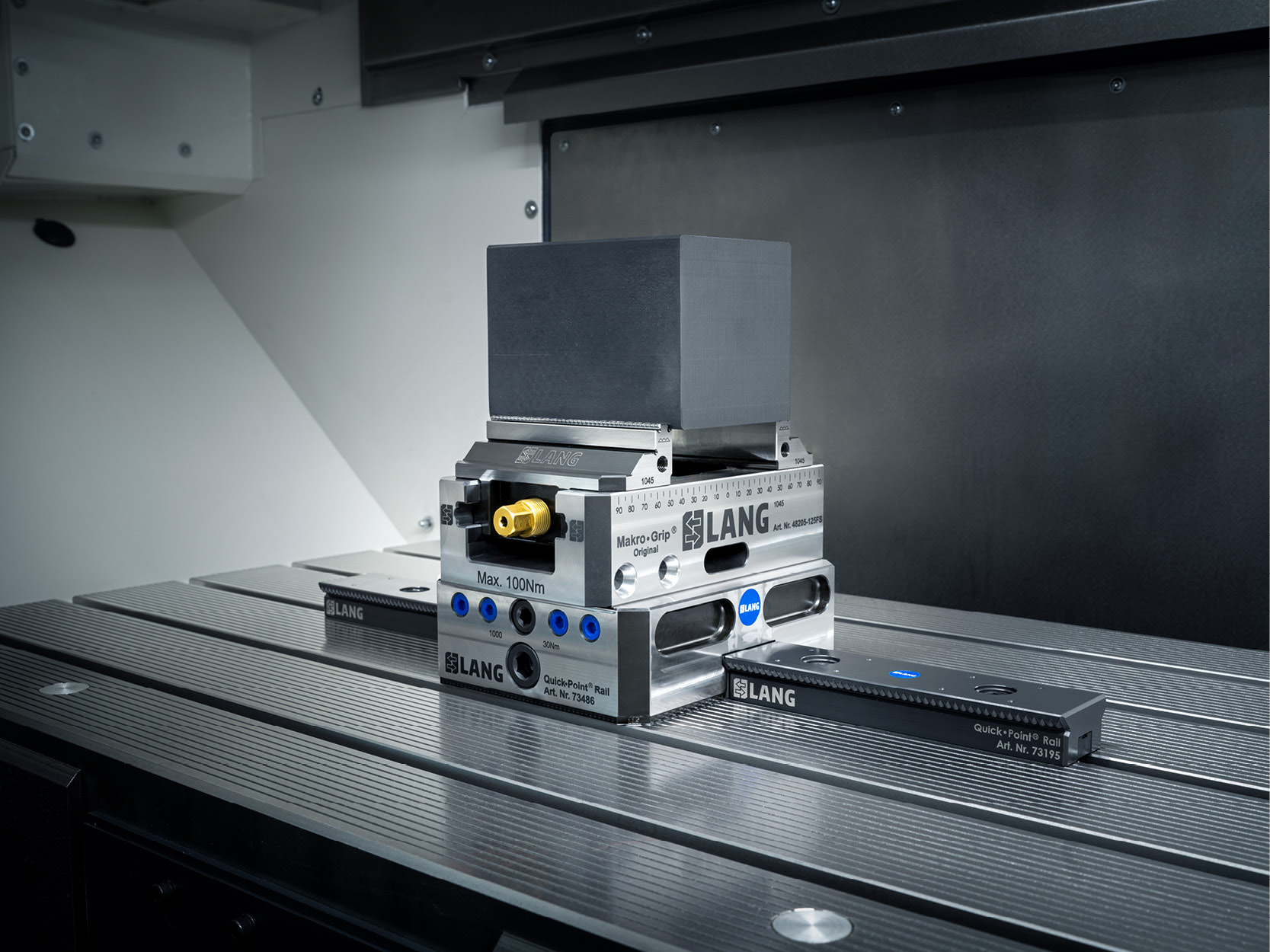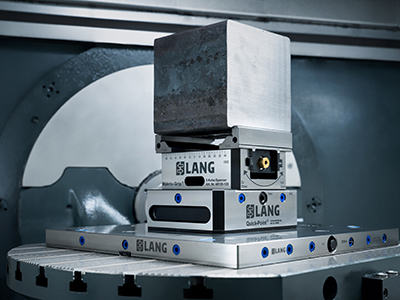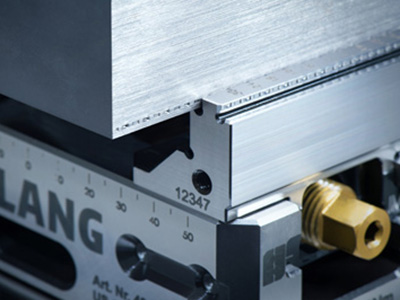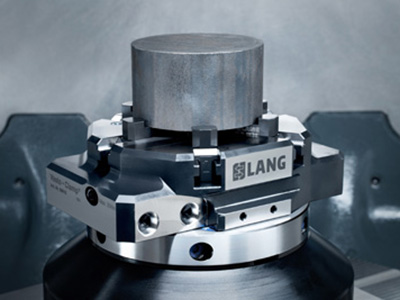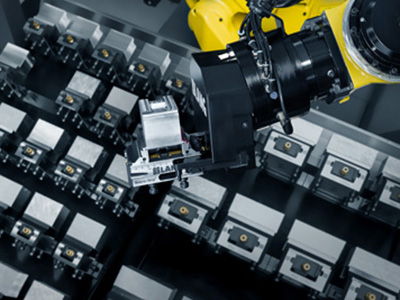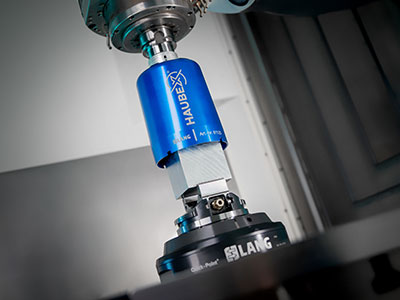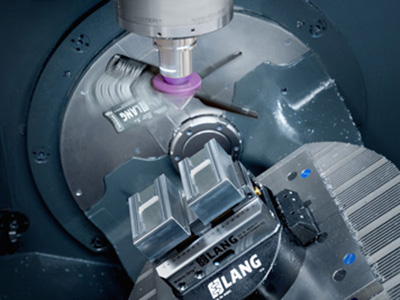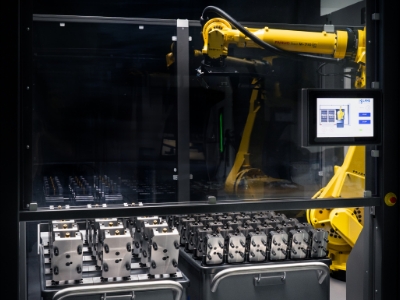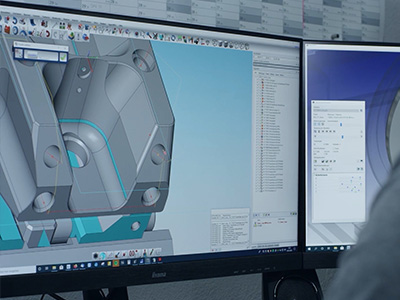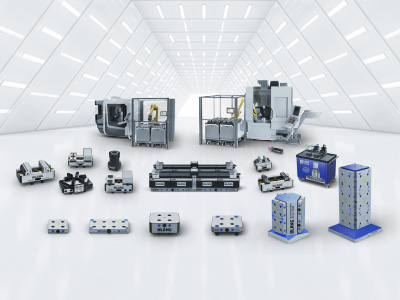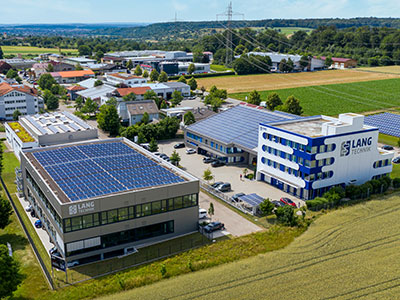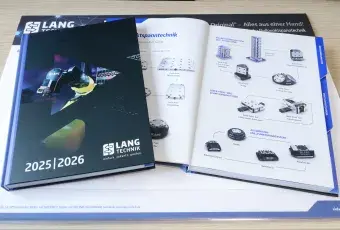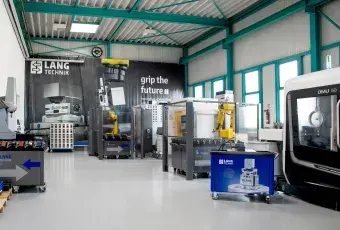
Frequently asked questions
about our workholding systems
General
Which type of clamping jaws do I need for which CNC machining task?
The Makro•Grip® 5-axis vise is the right choice for 5-axis raw-part machining, where good accessibility and high holding forces are required. For all other types of clamping jaws, the base body of the centering vise is available without pre-assembled clamping jaws There are numerous clamping jaw variants for this, to ensure that every type of component and shape is securely gripped. Another type of clamping jaw for raw material clamping is the Makro•Grip® FS, which is particularly useful for narrow workpieces and very soft materials. With the retrofittable Makro•4Grip clamping jaws, cylindrical raw materials can be held in a form-fitting manner. The Avanti and Profilo soft jaws are basically capable of clamping any shape – even round parts. For these, the operator also has the Vasto•Clamp 6-jaw chuck and the Preci•Point collet chuck available. The Vario•Tec jaws can be used to clamp (semi-)finished components with parallel surfaces.
What are the widths of the base bodies of the vises?
Vises from LANG Technik are available in the base body widths 46 mm, 77 mm and 125 mm. These are in turn available in different lengths, which define the respective clamping range.
Which are the jaw width of the vises?
The Makro•Grip® 5-Axis Vise is available in jaw widths of 46 mm, 77 mm and 125 mm. The clamping ranges are as follows:
- Jaw width 46 mm: Clamping range up to max. 120 mm
- Jaw width 77 mm: Clamping range up to max. 205 mm
- Jaw width 125 mm: Clamping range up to max. 355 mm
Is the vise base always the same?
All LANG vise types use the same base body. This means that all vise types are interchangeable and fully compatible with each other.
Are zero point clamping studs and jaws included with the vise?
Every clamping device from LANG Technik, regardless of whether it is a vice, jaw chuck or chuck, is equipped with an integrated zero point interface in the form of Quick•Point® clamping studs / pull studs. Clamping jaws are also included in the scope of delivery of the vises. Soft top jaws are excluded for the Avanti and Profilo vises and the 6-jaw chuck. The different versions of the top jaws allow a free selection depending on requirements and application.
Do other clamping jaws fit on the vise base bodies?
Since all LANG vise types use the same base body, all clamping jaw types are also interchangeable.
Which zero point plate do I need for which vise size?
The suitable zero point grid for vices with base body widths of 46 mm and 77 mm is Quick•Point® 52. For vices with base body widths of 125 mm, Quick•Point® 96 is suitable.
Can the vises also be screwed directly onto the machine table?
Not by default. However, the clamping studs could be removed and the vise clamped directly on the table by means of an adapter plate.
Can the Makro•Grip® vises also be used in automation?
Yes, the base bodies of selected Makro•Grip® vises are prepared so that they can be stored on an automation trolley and picked up directly by the Fanuc CNC-robot: Makro•Grip® 77 = base body length 130 mm / Makro•Grip® 125 = base body length 210 mm. Likewise, Avanti and Vario•Tec vises can be used in the same lengths.
Are the centering vises from LANG robust?
With its case-hardened base body and clamping jaws milled from solid material, the LANG vise can withstand even the greatest cutting forces. In addition, the vices are low-maintenance and low-wear, so that a long service life can be guaranteed.
Why does LANG Technik not offer vises with a fixed jaw?
For years, we have seen the advantages of 5-axis machining and accordingly align our products with concentric programming. Furthermore, modern probe systems make the reference to a fixed jaw obsolete.
Pre-stamping / 5-axis machining
How do I choose the right jaw width of the Makro•Grip® 5-Axis Vise?
The jaw width should be selected depending on the workpiece size and the desired accessibility to the workpiece. In general, the wider the jaws, the higher the holding force. As a rule of thumb for the maximum workpiece size, the following applies: maximum width = 3x jaw width, maximum height = 2x jaw width. Depending on the material and cutting forces, the maximum size can be significantly larger or somewhat smaller.
How large may the workpiece to be clamped in the Makro•Grip® 5-Axis Vise be?
Ultimately, too many machining parameters play a role here to be able to answer this question exactly. For clamping pre-stamped workpiece blanks in the Makro•Grip® 5-Axis Vise, the rule of thumb is: Width = 3x jaw width and height 2x jaw width. This should be possible without any problems in any case.
Will a workpiece hold on only 3 mm clamping depth?
Absolutely, yes. The clamping depth of 3 mm is sufficient to securely fix the workpiece on the support surface of the clamping jaw. At the same time, the low clamping edge requirements allow for perfect accessibility from all sides. The machinist can save material and also benefits from a smaller chip removal volume for second operations.
What are the benefits of pre-stamping workpiece blanks?
In contrast to classic clamping by friction, the stamping technology enables clamping by form-fit. Here, a pyramid-shaped clamping serration engages in a corresponding negative form on the workpiece. This 3-dimensional clamping enables a significantly higher holding force with comparatively very low clamping force. Furthermore, the raw parts do not have to be prepared further, as is the case with dovetail milling, for example, which saves machine capacities and enables enormous time gains.
Which materials can be pre-stamped?
All non-brittle materials can be pre-stamped. Typically, these are steels, non-ferrous metals and plastics. High-alloy steels, titanium and inconell can also be processed with the appropriate stamping jaws.
What is the maximum material hardness that can be pre-stamped?
Materials up to a maximum of 45 HRc can be pre-stamped with High-End stamping jaws.
How high is the holding force with the stamping technology?
Unfortunately, the holding force of the stamping technology cannot be quantified with figures alone due to the special, form-fit clamping technology. Compared to conventional clamping by friction, the holding force is many times higher and this at low clamping forces, which ultimately results in less deformation of the clamped workpiece.
Makro•Grip® Ultra
Do I need a zero point clamping system for Makro•Grip® Ultra?
No. For Makro•Grip® Ultra, there are now so-called base plates that can be firmly connected to the base body and mounted to the machine table. This is useful, for example, if it is not necessary to remove the clamping system.
Up to which clamping range can I use Makro•Grip® Ultra?
The standard maximum clamping range is 810 mm. However, an even larger clamping range can be realized by customizing the threaded spindle. For this purpose, only further base bodies have to be joined and connected with each other.
Clamping of profile / contour / cylindrical parts
Is it possible to manufacture top jaws for the Profilo and Avanti vises yourself?
For the Profilo system, we offer the drawing for in-house production of the top jaws for download. However, not for the patented Avanti system.
Can round components also be clamped from the inside out with the 6-jaw chuck?
Yes, special base jaws and top jaws are available for the Vasto•Clamp 6 jaw chuck, which enable internal clamping. The maximum clamping diameter is 190 mm.


